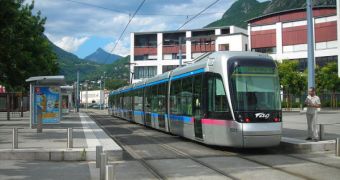All of you have used public transportation at least once in your lives. As it stands, some of you use it every day, and are well familiar with the “platooning effect” that trams, buses and even subways seem to get into. In a nutshell, you wait and wait for a bus to come, and then three arrive at the same time. The first is naturally filled to the brink, while the others are almost empty. This effect, efficiency experts say, can be made to go away.
At the end of a line, those who control subway traffic, for example, send each car out into the tunnels at a predefined time. An equal distance is kept between the cars, as in each one is shipped, say, ten minutes after the other. But platooning is inevitable on a crowded day. The thing that dictates whether a train will have a delay or not is its passengers. If they climb into the vehicle efficiently, and on time, then the train leaves on time. If not, it will have a small delay. Because there are many people along the line, at each station, that delay constantly gets larger and larger.
At the same time, the machine coming in from behind has to pick up less and less people, so it moves faster through the stations, until it finally catches up with the first one. The third vehicle also catches up with the two a bit later, and, at the last station in the line, they all arrive together. Investigators believe that the solutions traffic controllers resort to, of sending in more vehicles during rush hours, are not necessarily the correct ones. Platooning can be fought against in a simpler manner. Carlos Gershenson and Luis Pineda, both system-complexity researchers at the National Autonomous University of Mexico, believe they may have the answer.
The two developed an agent-based computer simulation, in which each train behaved individually. Adding more trains only led to longer platoons. If the trains had had the ability to move past each other, the only thing that would have happened was that they would have shuffled their order in the platoon. As a ground rule, the group was always led by a slow-moving, congested train. In their model, a certain set of conditions led to platoons never forming. Their requirements included the trains leaving the stations before embarking was complete, and also involved them being set on the course at certain times.
It may, therefore, be of paramount importance for people to stop getting on the first vehicle that swings by. That is to say, they should not all attempt to get on it. Doing so would only keep the bus or tram in the station for longer. Citizens waiting at stations at the other end of the town would have to stand for far longer than normal, and then get three buses at once, NewScientist reports.

 14 DAY TRIAL //
14 DAY TRIAL //